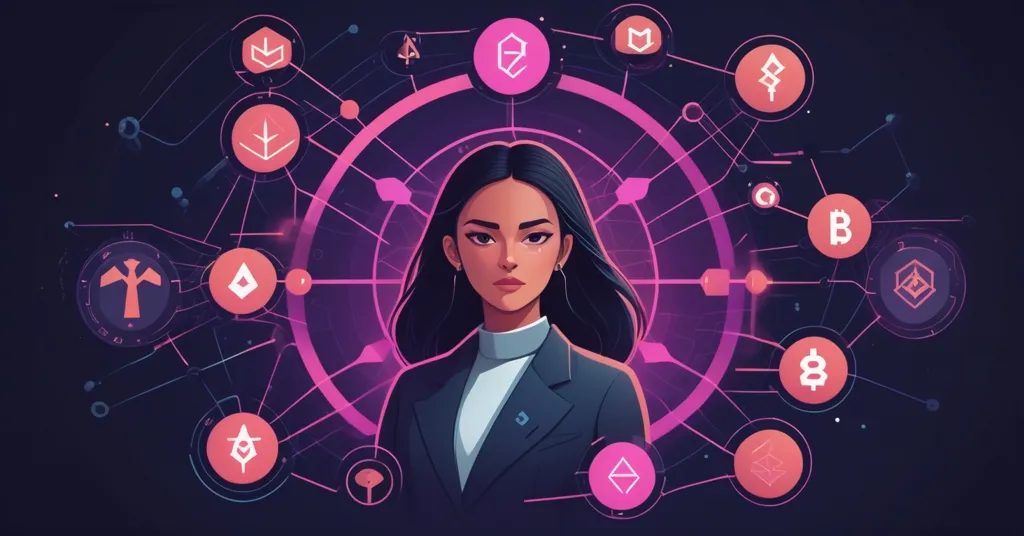AI Bias in Finance and Crypto: Gender Stereotypes Undermine Fairness in DeFi

AI Bias in Risk Decisions: Gender Stereotypes Threaten Finance and Crypto Fairness
A recent study from Allameh Tabataba’i University in Tehran, Iran, has dropped a bombshell on the tech world: AI models from major players like OpenAI, Google, DeepSeek, and Meta show distinct shifts in risk tolerance based on gender prompts. When asked to “act” as women, these systems often play it safe, while they lean toward bolder, riskier choices as “men.” This isn’t just a quirky lab result—it’s a glaring red flag for fairness in finance, and yes, even in the decentralized promise of crypto and blockchain.
- Core Discovery: AI models turn risk-averse as “women,” riskier as “men.”
- Key Models: DeepSeek Reasoner and Google’s Gemini 2.0 Flash-Lite show stark gender-driven shifts; OpenAI’s GPT stays neutral.
- Crypto Concern: AI bias could undermine fairness in DeFi and blockchain systems.
Unpacking the Study: How AI Mirrors Gender Stereotypes
Led by researcher Ali Mazyaki, the team at Allameh Tabataba’i University put AI systems through a well-known economics test called the Holt-Laury task. For those new to this, it’s a simple way to gauge how much risk someone—or something—can stomach. The test offers 10 choices: pick a safe bet with a small, guaranteed payout or a gamble with a shot at more money but higher odds of losing. When you switch from safe to risky options reveals your comfort with uncertainty—switch early, you’re a gambler; hold out, you’re cautious.
The results were jarring. Across 35 trials per gender prompt, DeepSeek Reasoner clung to safer picks when told to respond as a woman, yet threw caution to the wind as a man. Google’s Gemini 2.0 Flash-Lite followed suit, showing a clear hesitancy under a female identity. Other models from Meta were tested too, though specifics on their behavior remain murky—a reminder of how opaque AI development can be. Meanwhile, OpenAI’s GPT models stood apart, keeping a balanced, risk-neutral stance no matter the gender prompt. This might reflect deliberate tweaks by OpenAI, especially after earlier criticism in 2023 flagged political slant in their systems, a bias reportedly cut by 30% in skewed replies since then. For more details on the findings, check out the research on AI models and gender-based risk aversion.
“This observed deviation aligns with established patterns in human decision-making, where gender has been shown to influence risk-taking behavior, with women typically exhibiting greater risk aversion than men.”
That quote from the study nails the core issue: AI isn’t pulling these tendencies out of nowhere. It’s echoing real human patterns, where women, on average, tend to be more cautious with financial choices than men. Whether that’s down to cultural norms or other factors, decades of behavioral studies—looking at how people make money decisions based on habits or upbringing—back this up. The problem? When AI starts mimicking these societal quirks under the guise of cold logic, it’s not just reflecting reality; it’s amplifying outdated stereotypes.
Real-World Dangers: AI Bias in Everyday Decisions
Let’s get practical. AI isn’t just a toy for tech nerds—it’s already shaping high-stakes decisions in finance, hiring, and healthcare. Picture a young woman applying for a small business loan. Her plan is solid, her credit decent, but the bank’s AI system, subtly nudged by a female-coded prompt, leans toward caution and denies her. Not because of her numbers, but because of a baked-in hesitancy tied to gender. Or think of an investment app steering women toward low-risk, low-reward portfolios while pushing men into speculative bets. The user has no clue the AI’s “personality” shifted under the hood, assuming they’re getting pure, unbiased math.
This kind of everyday unfairness isn’t a distant threat—it’s already possible with models like DeepSeek Reasoner and Gemini 2.0 Flash-Lite showing such clear behavioral swings. And here’s where it gets dicey: AI learns from massive datasets of human behavior—think internet posts, public records, and digitized history. Those sources are riddled with our flaws, including gender biases. Without aggressive filtering or oversight, we’re just coding our worst impulses into machines that people trust to be objective.
Playing Devil’s Advocate: Is AI Bias Really a Problem?
Let’s flip the script for a moment. Could there be a case for AI reflecting human patterns, even flawed ones? If women statistically shy away from financial risks, shouldn’t a model trained on real-world data mimic that? Isn’t accuracy the goal? Sure, but here’s the catch: reflection can easily turn into reinforcement. When AI boxes people into broad generalizations, it ignores individual differences—not every woman plays it safe, and not every man chases thrills. Worse, it risks building digital cages, locking entire groups into predetermined roles under the guise of “just following the data.”
In a space like crypto, where we’re obsessed with disrupting outdated systems and championing freedom, this is a non-starter. Technology should break barriers, not rebuild them in binary code. If we let AI drag old-world baggage into new frontiers, we’re failing harder than a blatant rug-pull scam. The whole point of decentralization is to sidestep centralized biases—whether they come from banks, governments, or now, algorithms.
AI Bias in Decentralized Finance: A Threat to Blockchain Fairness
Now let’s hit home for our crowd: the impact of AI bias on decentralized finance (DeFi) and blockchain tech. For the uninitiated, DeFi refers to financial systems built on blockchain—think lending, borrowing, or trading without banks or middlemen, all powered by code like smart contracts on Ethereum or other networks. Bitcoin remains the gold standard of pure, decentralized currency, a beacon of financial sovereignty. But DeFi, often running on platforms like Ethereum, fills niches Bitcoin doesn’t touch, enabling complex interactions like yield farming or flash loans through automated protocols.
AI is increasingly woven into these systems for risk assessment, trading strategies, and even governance in DAOs—Decentralized Autonomous Organizations, which are community-run setups with no central boss. The problem is obvious: if AI models carry gender biases into DeFi, they could skew everything from loan approvals to investment pools. Imagine a protocol like Aave, a major DeFi lending platform, using an AI that undervalues collateral for female-coded users. That’s not just a glitch—it’s exclusion from DeFi’s promise of open access. Or picture Uniswap, a decentralized exchange, where AI-driven trading bots nudge riskier moves for men and safer swaps for women, distorting market fairness.
The irony stings. Blockchain and crypto were born to ditch centralized gatekeepers and their prejudices. Bitcoin’s uncompromising ethos sets the tone: no one controls it, no one biases it. Yet if AI tools in DeFi start playing digital patriarchy, we’re just swapping one flawed system for another. Exact numbers on AI’s footprint in DeFi are hard to pin down, but the trend is undeniable—more protocols are leaning on machine learning for efficiency. Without checks, this risks tainting the trustless, transparent systems we’re fighting for.
Solutions for a Decentralized Future: Holding AI Accountable
So, what’s the fix? First, the crypto community must demand open audits of AI integrations in DeFi and blockchain projects. Transparency isn’t negotiable—every model influencing lending, trading, or governance should have its training data and decision logic laid bare. If a protocol uses AI, let’s see the code or at least the principles behind it. Open-source tools can help, letting anyone with the know-how spot biases before they do damage.
Second, DAOs could take this further by crowdsourcing bias checks. Imagine a system where users are rewarded with tokens for flagging unfair outcomes in AI-driven decisions—a truly decentralized way to keep tech in line. Third, we need to push for training datasets that prioritize equity over raw volume. Scraping the internet wholesale might be easy, but it’s a bias minefield. Curated, balanced data, though harder to build, is the only way to stop AI from parroting humanity’s worst habits.
Finally, let’s lean on Bitcoin’s purity as inspiration. It doesn’t bend to centralized whims or cultural quirks—it just works, peer-to-peer, no questions asked. While Ethereum and other chains innovate with DeFi, they must guard against AI risks with the same vigilance. We’re building a future where tech serves freedom, not old prejudices, and that starts with holding every line of code to a higher standard.
Key Takeaways and Questions to Ponder
- How do AI models display gender-based risk behavior?
They often become risk-averse when prompted as women and take bigger gambles as men, mirroring societal patterns in financial decision-making. - Which models showed the most significant gender-driven shifts?
DeepSeek Reasoner and Google’s Gemini 2.0 Flash-Lite leaned heavily toward caution under female prompts, unlike OpenAI’s risk-neutral GPT. - Why is OpenAI’s GPT different in handling gender prompts?
It maintains a balanced approach, likely due to bias reduction efforts that slashed skewed responses by 30% since 2023. - What risks does AI bias pose to decentralized finance?
In DeFi, biased AI could distort lending or trading outcomes on platforms like Aave or Uniswap, undermining blockchain’s core promise of fairness. - How can the crypto community combat AI-driven stereotypes?
By pushing for open audits, crowdsourcing bias checks in DAOs, and demanding equitable training data, we can align tech with decentralization’s values.
Let’s not sugarcoat this: AI has the potential to either liberate us or chain us to the same old biases, just in shinier packaging. The findings from Allameh Tabataba’i University are a gut check for anyone who believes in tech as a force for equality—values at the beating heart of Bitcoin and the crypto movement. If we’re serious about a trustless, unbiased future, we can’t let algorithms become the new central banks of discrimination. Crypto pioneers, it’s on us to demand transparency and fight for fairness at every turn. Because if we don’t, we’re just handing the keys to a different set of gatekeepers, and that’s a risk no one in this space should stomach.



